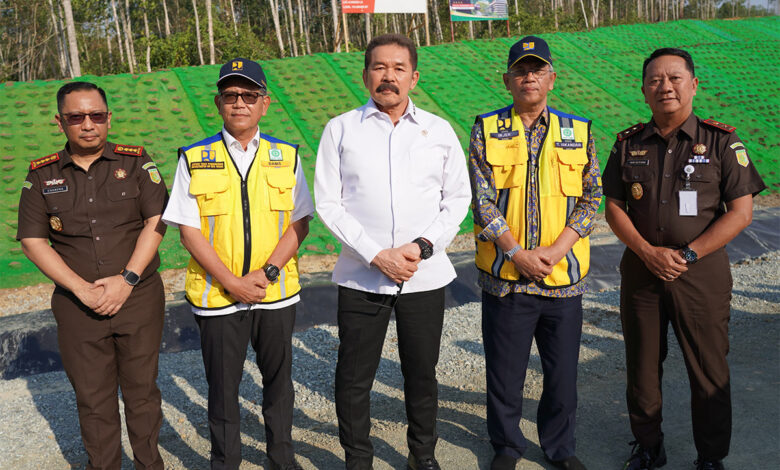Declassified: The Untold Story Of The U.S. Nuclear Facility Under Greenland's Ice

Table of Contents
Project Iceworm: The Secret Cold War Initiative
The Cold War cast a long shadow over global politics, and Greenland, a strategically vital island, found itself at the center of a clandestine operation. Its location, a mere 700 miles from the Soviet Union, made it an ideal, albeit challenging, site for a network of missile bases. Enter Project Iceworm, a top-secret initiative conceived in the late 1950s to establish a vast, underground network of nuclear missile launch sites beneath the Greenland ice sheet. The goal was simple: create a virtually impenetrable, surprise-attack capable military installation. However, the reality proved far more complex.
- Key players: Project Iceworm involved a large team of military personnel, engineers, scientists, and support staff from various branches of the U.S. Armed Forces. The names of many remain obscured by decades of secrecy, though declassified documents are slowly revealing more key figures.
- Technological hurdles: Building and maintaining a nuclear facility under the ice presented unprecedented technological challenges. The extreme cold, the constant movement of the ice sheet, and the sheer scale of the undertaking pushed the boundaries of engineering capabilities.
- Cost and resources: The project demanded a staggering investment of resources and manpower, reflecting its strategic importance and the immense difficulties involved. Precise figures remain elusive, but available estimates suggest it was one of the most expensive and ambitious Cold War projects.
The Geological Challenges of Arctic Construction
Working on the Greenland ice sheet presented seemingly insurmountable difficulties. Sub-zero temperatures, relentless blizzards, and the ever-shifting landscape posed constant threats to personnel and equipment. The ice itself proved to be a formidable adversary.
- Ice flow and crevasses: The constant movement of the ice sheet, along with the presence of deep crevasses, created immense structural challenges. The very ground beneath the base was in constant motion.
- Equipment and personnel: Specialized equipment, designed to withstand the extreme conditions, was essential for construction and research. Personnel faced extreme risks and had to endure harsh working conditions, including periods of prolonged isolation.
- Innovative solutions: While the project ultimately failed, engineers and scientists developed innovative solutions to overcome some of the geological challenges, employing advanced techniques and materials never before used on this scale. These innovations, though ultimately insufficient for long-term success, pushed the boundaries of engineering in extreme environments.
Environmental Concerns and the Legacy of Project Iceworm
The environmental impact of Project Iceworm remains a topic of concern and debate. The potential for radioactive contamination from nuclear waste, spent fuel, and other materials used in the project poses a long-term risk to the fragile Arctic ecosystem.
- Potential contamination sources: The declassified documents hint at the potential release of radioactive materials into the environment, although the extent of any contamination remains largely unknown. Further investigation is necessary.
- Environmental monitoring: While specific details remain scarce, some environmental monitoring efforts may be underway to assess the current state of the area and the potential for long-term environmental damage. Independent research is crucial to ascertain the full extent of any contamination.
- Long-term effects: The potential long-term effects on the Greenlandic ecosystem are a matter of serious concern, highlighting the need for comprehensive research and ongoing monitoring.
Declassified Documents and Recent Discoveries
The recent declassification of documents related to Project Iceworm has shed new light on this secretive Cold War undertaking. These documents offer a more detailed understanding of the project's scope, challenges, and eventual failure.
- Revealed details: Newly released maps, blueprints, and internal memos provide invaluable insights into the project's planning, execution, and eventual abandonment. They detail the technological innovations, engineering challenges, and logistical nightmares.
- Key figures: The declassification process is helping to identify and understand the roles played by various individuals involved in the project, shedding light on their contributions and the decision-making processes that shaped its fate.
- New theories: The released information has spurred new interpretations and theories about the project's strategic goals, its technological limitations, and the reasons for its ultimate failure.
Conclusion: Uncovering the Secrets of the U.S. Nuclear Facility Under Greenland's Ice
Project Iceworm stands as a testament to the ambition, challenges, and ultimate limitations of Cold War military endeavors in extreme environments. The secrecy surrounding the project, the immense logistical and geological challenges encountered, and the potential environmental legacy all contribute to its enduring fascination. The recent declassification of documents has significantly enhanced our understanding of this pivotal episode in Cold War history. This newfound information underscores the importance of continued research into this little-understood facet of the Cold War and its potential impact on the Arctic environment. To delve deeper into this fascinating topic, explore related documentaries, books, and research papers focusing on the U.S. nuclear facility under Greenland's ice and other Cold War Arctic projects. Learn more about this hidden chapter of history and the lasting impact of this ambitious – and ultimately abandoned – Greenland ice sheet nuclear project.

Featured Posts
-
 The Warriors Need Jimmy Butler Not Another Kevin Durant
May 15, 2025
The Warriors Need Jimmy Butler Not Another Kevin Durant
May 15, 2025 -
 Proyek Strategis Nasional Pemerintah Libatkan Swasta Dalam Pembangunan Giant Sea Wall
May 15, 2025
Proyek Strategis Nasional Pemerintah Libatkan Swasta Dalam Pembangunan Giant Sea Wall
May 15, 2025 -
 Maple Leafs Defeat Avalanche 2 1 In Close Contest
May 15, 2025
Maple Leafs Defeat Avalanche 2 1 In Close Contest
May 15, 2025 -
 Andor Season 1 Episodes 1 3 Where To Watch Online Hulu And You Tube
May 15, 2025
Andor Season 1 Episodes 1 3 Where To Watch Online Hulu And You Tube
May 15, 2025 -
 Wildfire Gambling A Disturbing Trend In Los Angeles
May 15, 2025
Wildfire Gambling A Disturbing Trend In Los Angeles
May 15, 2025
